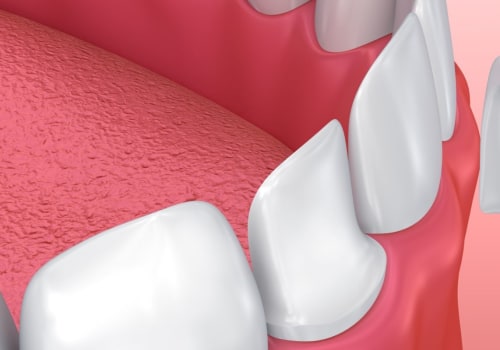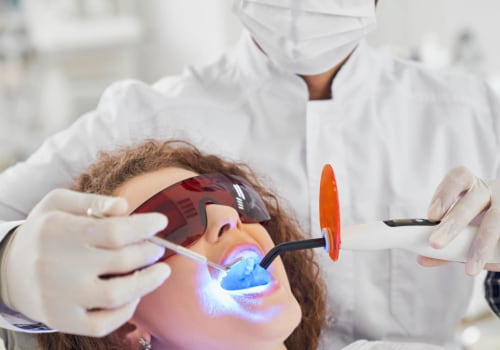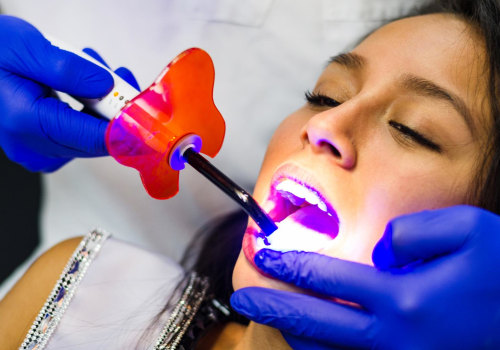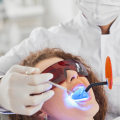If you're one of the many people in Canberra looking to obtain dental implants, you may be wondering about the best way to go about it. Fortunately, there is a technique that can help maximize precision and comfort during your implant procedure: laser dentistry. This innovative approach uses advanced technology to provide a more precise and comfortable experience for patients. By utilizing lasers instead of traditional tools, laser dentistry offers several benefits. For one, it reduces bleeding and swelling during surgery, which means less recovery time and discomfort overall. Laser dentistry can target specific areas with greater accuracy than traditional methods.
Understanding Laser Dentistry For Dental Implants
So, you're curious about laser dentistry for dental implants? Let's dive into what it means and how it can make your implant experience even smoother. Laser dentistry techniques involve the use of focused light beams to perform various dental procedures with precision and accuracy. This technology has been around for decades, but recent advances have made it more widely available and affordable.
One of the main advantages of laser dentistry is that it minimizes bleeding and swelling during surgery, which translates to a faster recovery time with less discomfort. In addition, lasers are incredibly precise, allowing for more accurate incisions and bone shaping needed for implant placement. There are several types of laser devices used in dental implant surgeries such as diode lasers, erbium lasers, and CO2 lasers. Your dentist will choose the most appropriate one based on your unique needs and situation.
Benefits Of Laser Dentistry For Dental Implants
One fascinating fact is that the use of lasers during implant surgery has been shown to reduce bleeding by up to 60%. This means that you'll experience less discomfort during the procedure and have a faster recovery time. In addition, laser dentistry can help improve the aesthetics of your dental implants. With traditional implant surgery, there's often significant post-operative discomfort due to the invasive nature of the procedure.
However, with laser dentistry, you can expect less swelling and pain after your dental implant procedure. The use of lasers also helps stimulate healing in the area around the implant, promoting faster recovery times. Finally, because lasers are more precise than traditional tools, they allow for greater control over implant placement and can result in improved aesthetic outcomes.
The Role Of Precision In Dental Implant Procedures
You will notice how important precision is during dental implants procedure, as it can greatly impact the success and aesthetic outcome of your new tooth. With advancements in technology, laser dentistry has transformed the way implants are placed by offering unparalleled accuracy. Laser dentistry allows for a minimally invasive approach to implant placement with reduced bleeding and discomfort compared to traditional methods.
Lasers provide more precise incisions and control over tissue removal, resulting in a better fit between the implant and surrounding gum tissue. This level of accuracy not only ensures the longevity of your dental implant but also contributes to a more natural-looking result that seamlessly integrates with your existing teeth.
The Step-By-Step Procedure In Dental Implants
The placement of dental implants is a multi-step process that typically involves several stages and may take several months to complete. Here is a step-by-step overview of the procedure:
- Initial consultation: The process begins with an initial consultation with a qualified dental professional, usually an oral surgeon or a periodontist. During this consultation, the dentist will evaluate your oral health, take X-rays, and discuss your medical history to determine if you are a suitable candidate for dental implants.
- Treatment planning: Once you are deemed eligible for dental implants, a comprehensive treatment plan will be developed. This plan takes into account factors such as the number of missing teeth, the condition of your jawbone, and any additional procedures that may be required, such as bone grafting or tooth extractions.
- Preparatory procedures: In some cases, preparatory procedures may be necessary before implant placement. This can include bone grafting, which involves adding bone material to the jawbone if it lacks the necessary density to support implants. Additionally, tooth extractions may be required if there are any remaining teeth that need to be removed before implant placement.
- Implant placement: The next step is the actual placement of the dental implant. This is usually performed under local anesthesia. The dentist will make an incision in the gum tissue to expose the jawbone and then drill a small hole where the implant will be inserted. The implant, typically made of titanium, is then carefully placed into the jawbone. The gum tissue is sutured back into place, leaving the implant securely positioned.
- Osseointegration: After the implant is placed, a process called osseointegration takes place. This is the natural healing process where the jawbone fuses with the implant surface, providing a stable foundation for the artificial tooth. Osseointegration typically takes several months, during which the patient may be given a temporary restoration to wear.
- Abutment placement: Once osseointegration is complete, the dentist will reopen the gum tissue to expose the implant. An abutment, which serves as a connector between the implant and the artificial tooth, is attached to the implant. The gum tissue is then sutured around the abutment, allowing it to heal properly.
- Dental crown placement: After the gum tissue has healed, an impression of the abutment and surrounding teeth is taken to create a custom dental crown. The dental crown is the visible part of the restoration and is designed to match the colour, shape, and size of your natural teeth. The crown is then securely attached to the abutment, completing the dental implant process.
- Follow-up visits: Regular follow-up visits will be scheduled to monitor the healing process, ensure the implant is functioning properly, and address any concerns or issues that may arise.
It's important to note that the exact steps and duration of the dental implant procedure may vary depending on individual circumstances and the complexity of the case. Your dentist or oral surgeon will provide you with specific instructions and guidance throughout the process.
How Laser Dentistry Maximizes Precision For Dental Implants
Getting dental implants can be nerve-wracking, but laser dentistry advancements have made the process more precise and comfortable. Precision technology is used to create a 3D model of your mouth, allowing the dentist to precisely plan where the implant needs to be placed. This eliminates any guesswork and ensures that the implant is placed in the optimal location for long-term success.
During the actual procedure, laser technology is used to make small incisions in your gum tissue, which reduces bleeding and results in less pain and discomfort. The laser also helps to sterilize the area, reducing the risk of infection. Overall, laser dentistry has revolutionized dental implant accuracy and has made it a more streamlined and comfortable process for patients.
Achieving The Smile You Deserve With Dental Implants
Dental implants are a popular choice for those who want a long-term solution to missing teeth. Although they may seem expensive at first glance, their longevity and durability make them a sound investment in the long run. Proper implant maintenance is crucial for their longevity, but it's not difficult. Regular brushing, flossing, and visits to your dentist can help keep your implants healthy. Oral hygiene is essential when it comes to dental implants. You should brush twice daily with fluoride toothpaste and floss between each implant at least once per day.
Maintaining good oral hygiene will prevent plaque buildup around the implant, which could lead to gum disease or even implant failure. In addition, regular check-ups with your dentist will ensure that any problems are detected early on before they become serious issues. With proper care and attention, dental implants can provide you with a beautiful smile that lasts a lifetime.
Contact A Skilled Dentist For Dental Implants In Canberra
When you're searching for a skilled dentist to help restore your smile, Acacia Dental Group is there to assist you. They understand just how important it is to have a beautiful and healthy smile, which is why they offer various dental implant treatments in Canberra. Their team of experienced dentists will work with you every step of the way to ensure that you receive the best possible care. At Acacia Dental Group, they prioritize your comfort during every dental procedure. With laser dentistry technology and sedation options available, their dental implant treatments are not only precise but also comfortable. Book your appointment today and take the first step towards improving your oral health and confidence.







